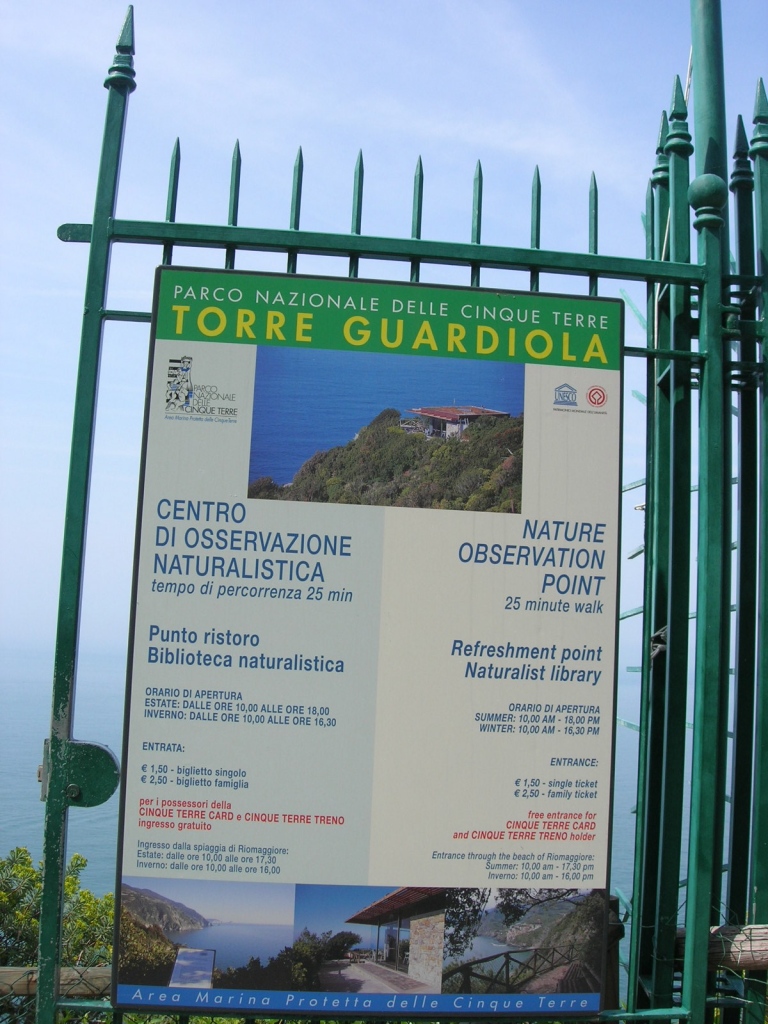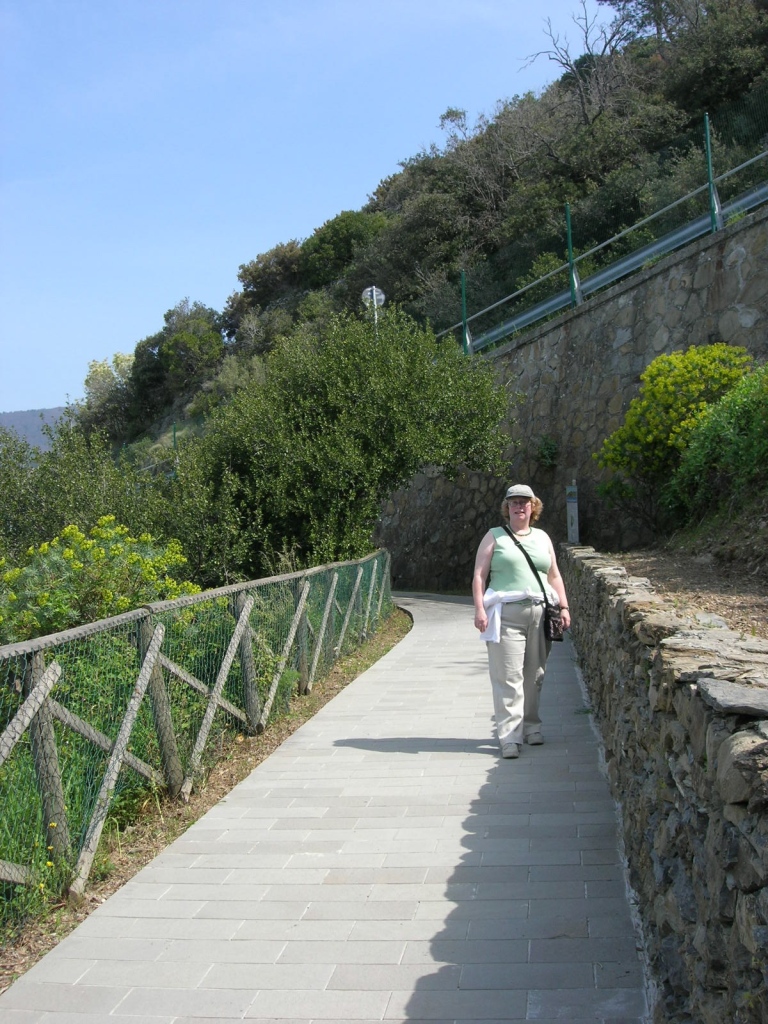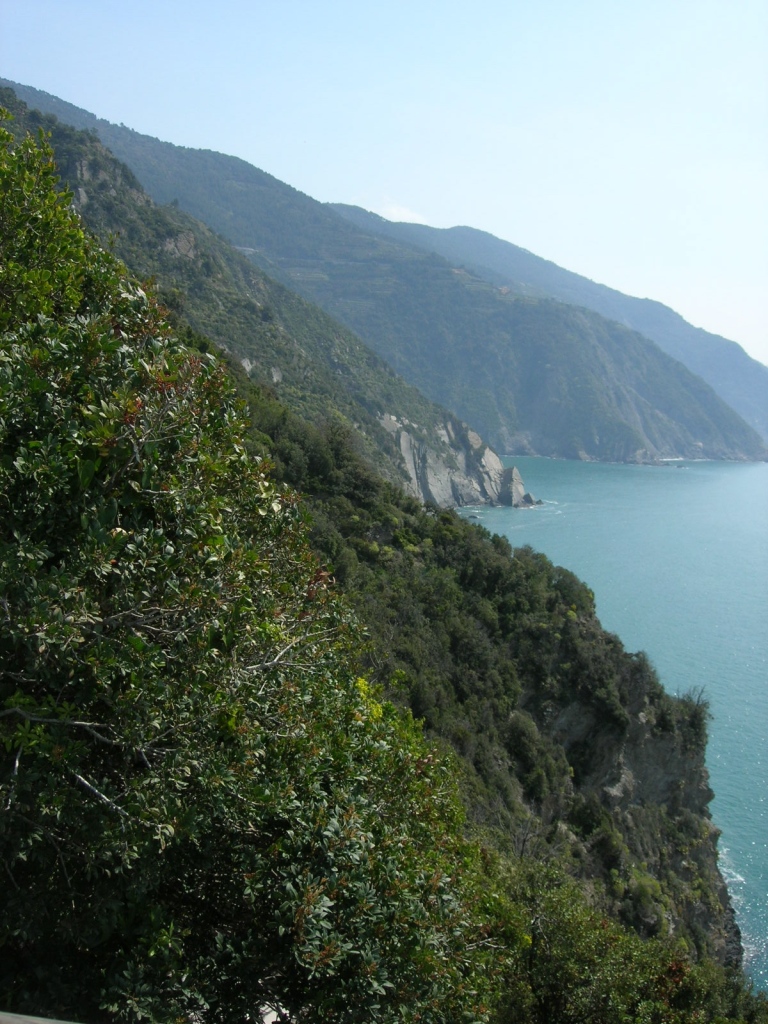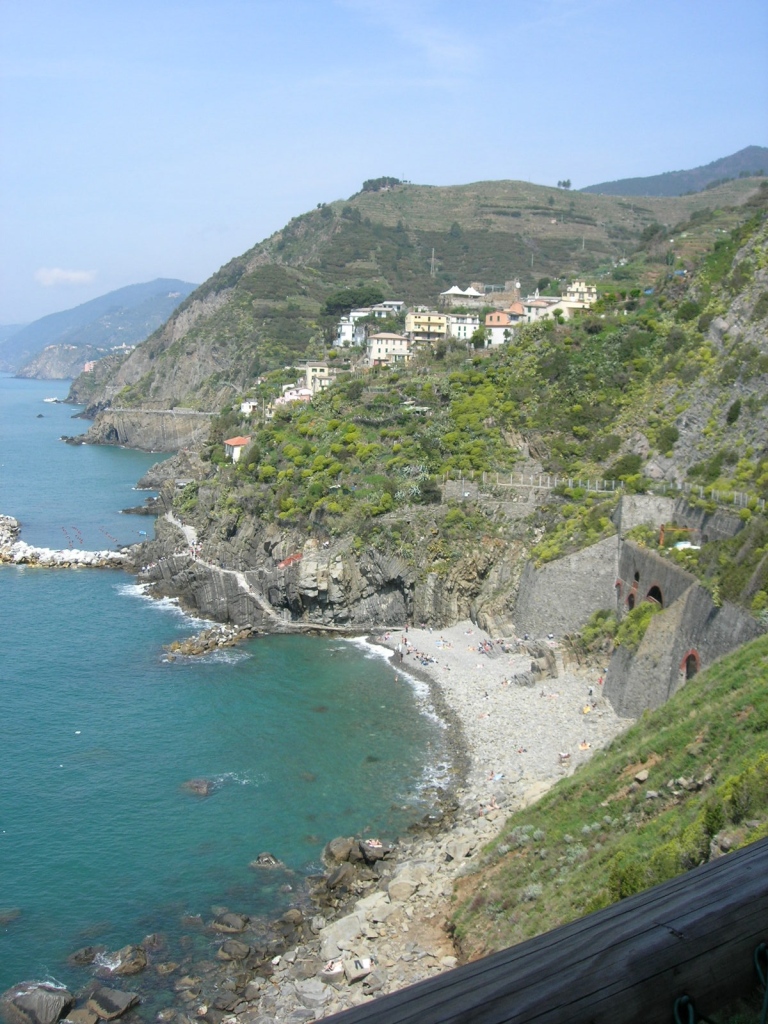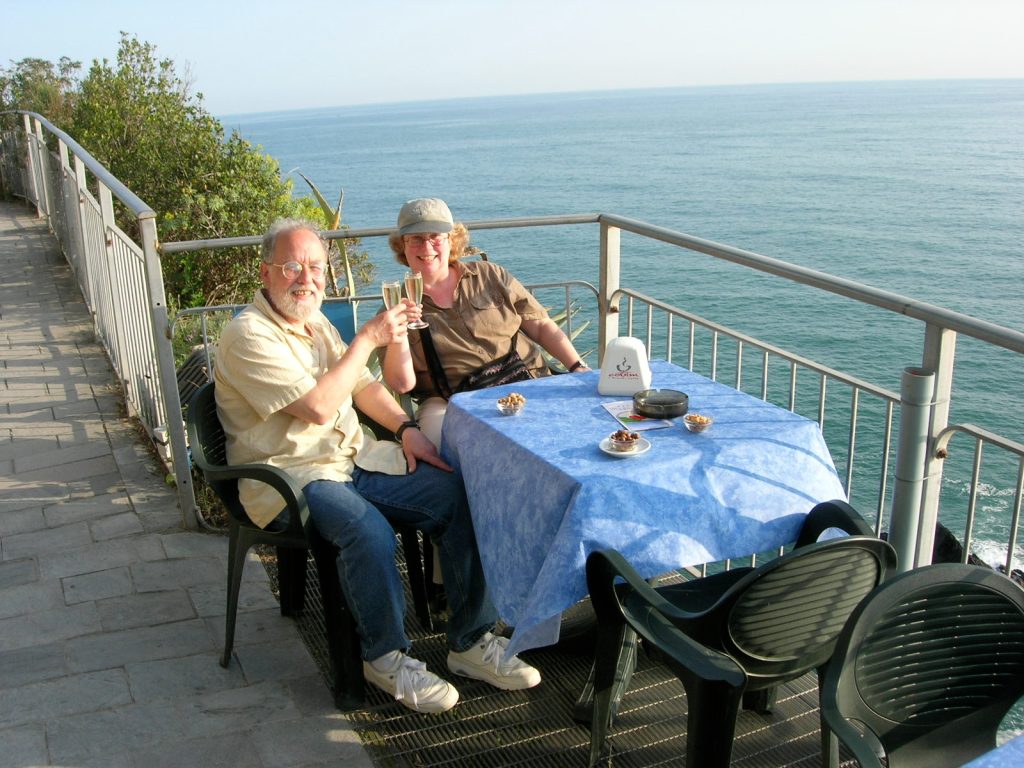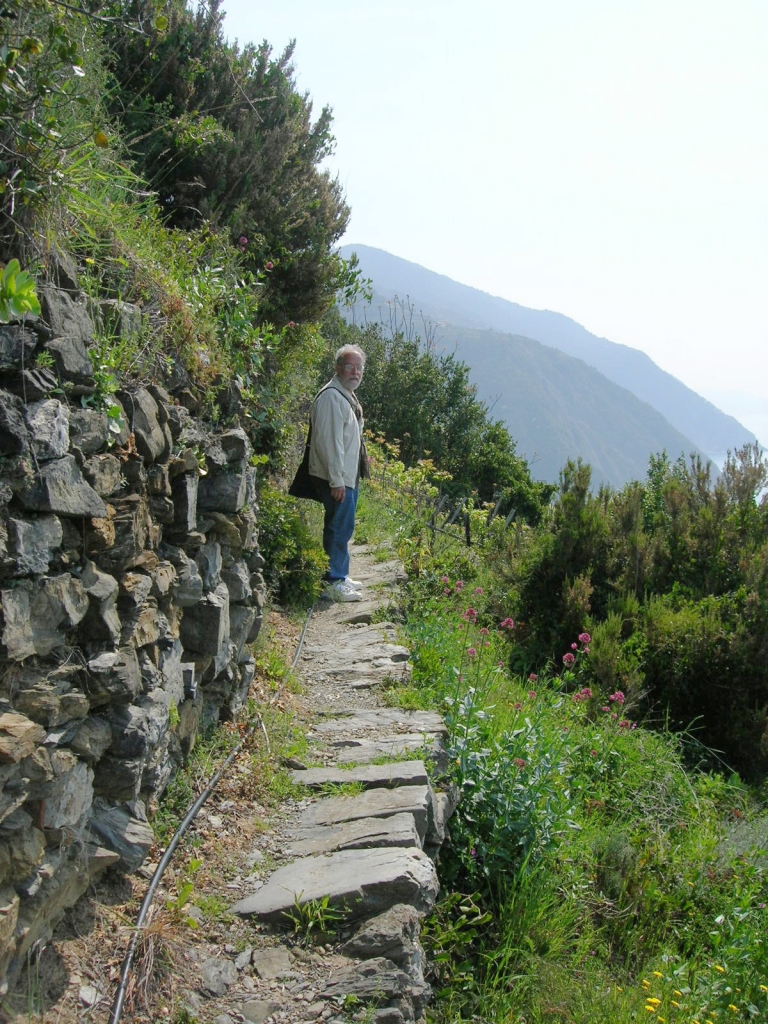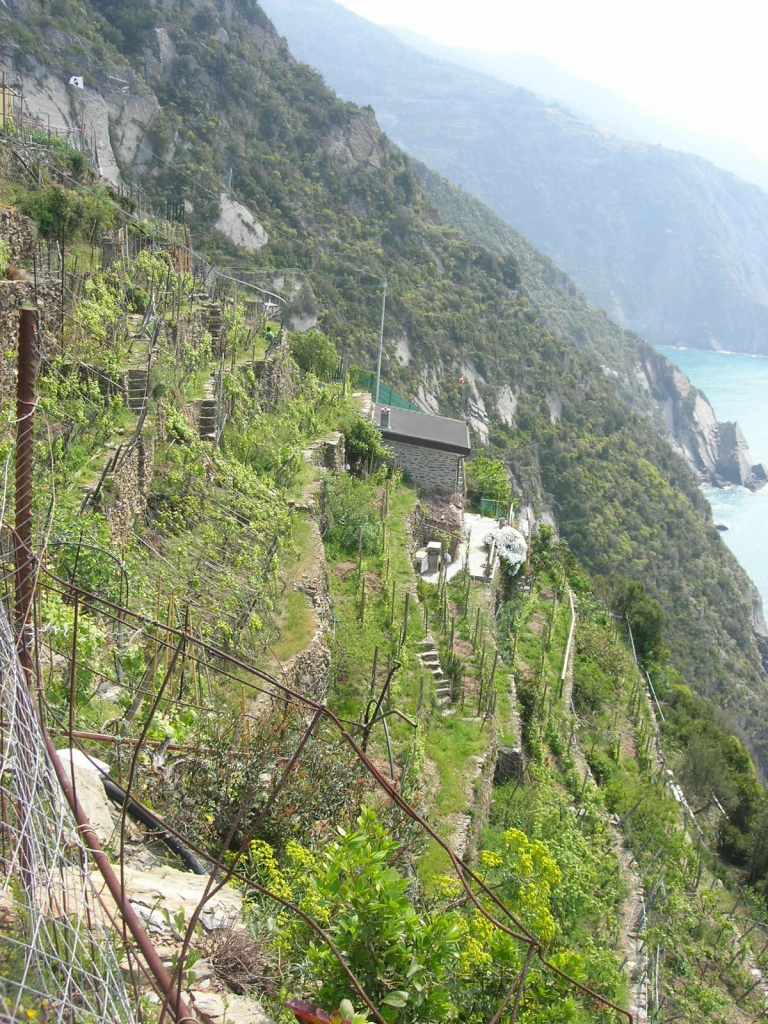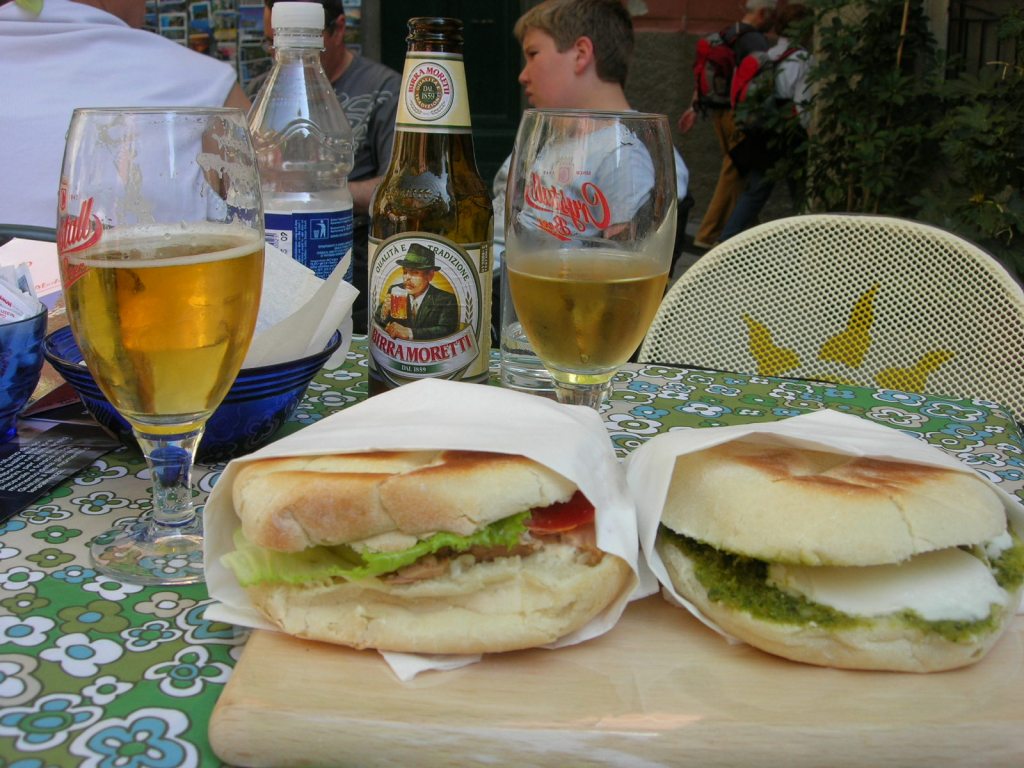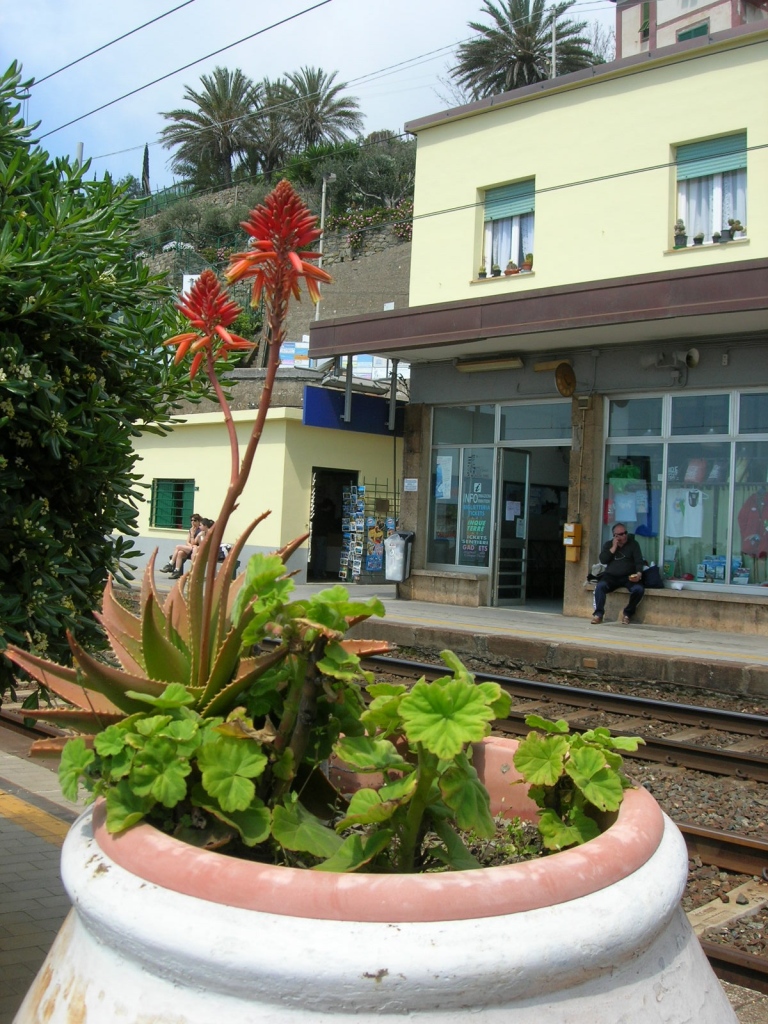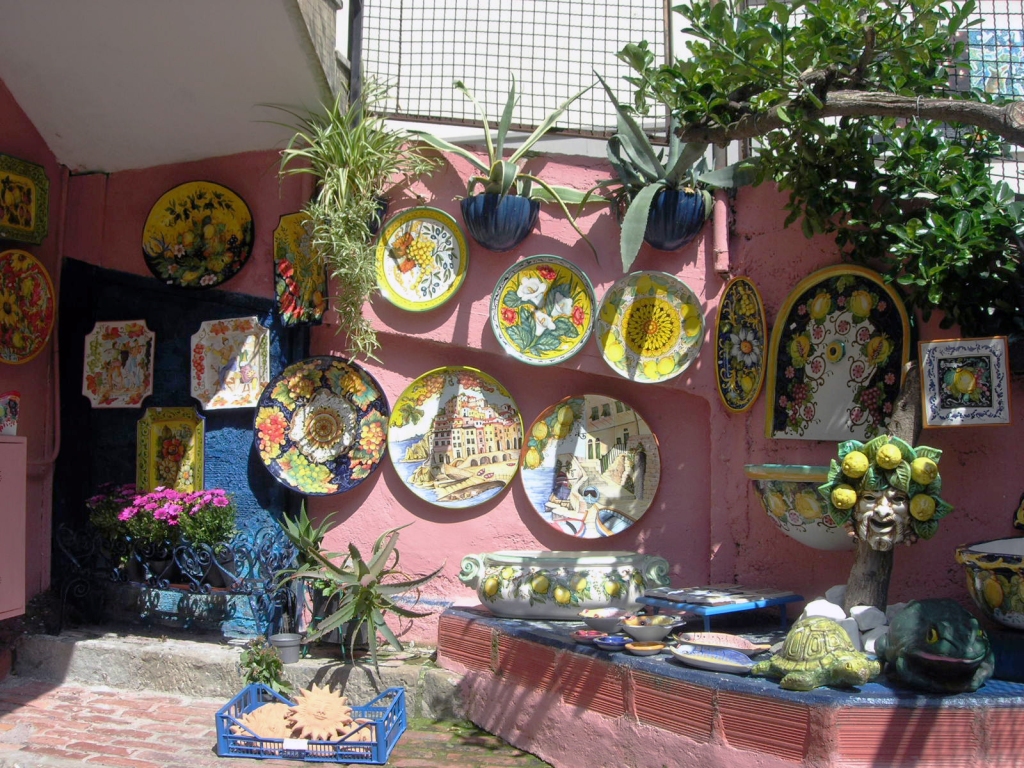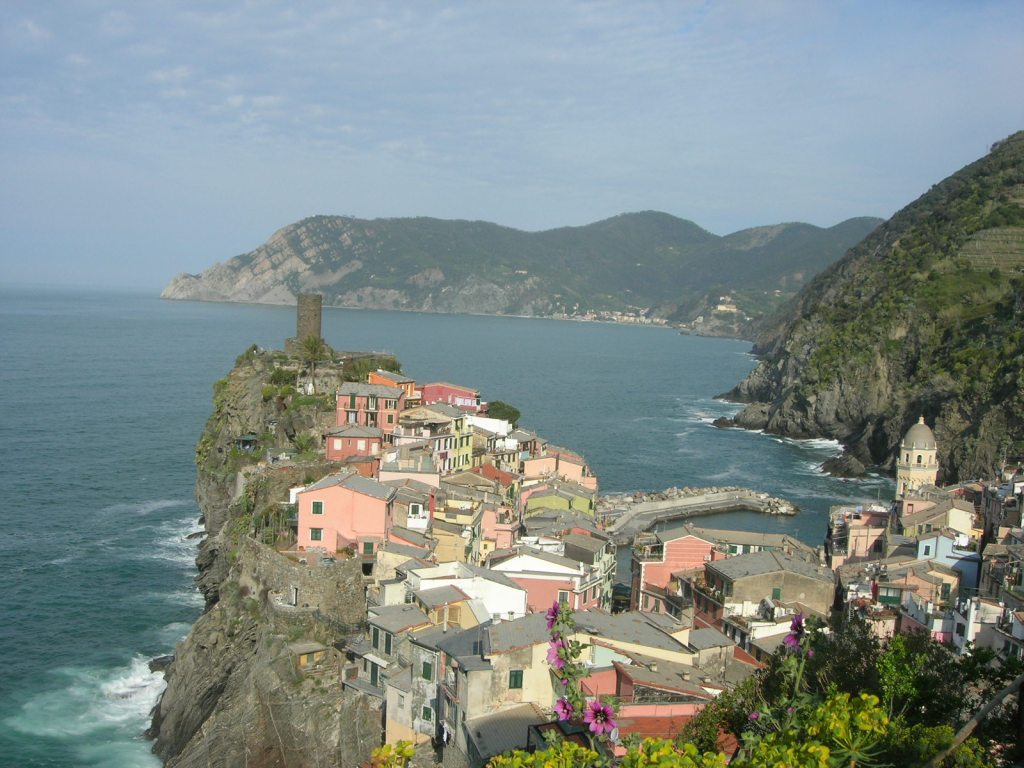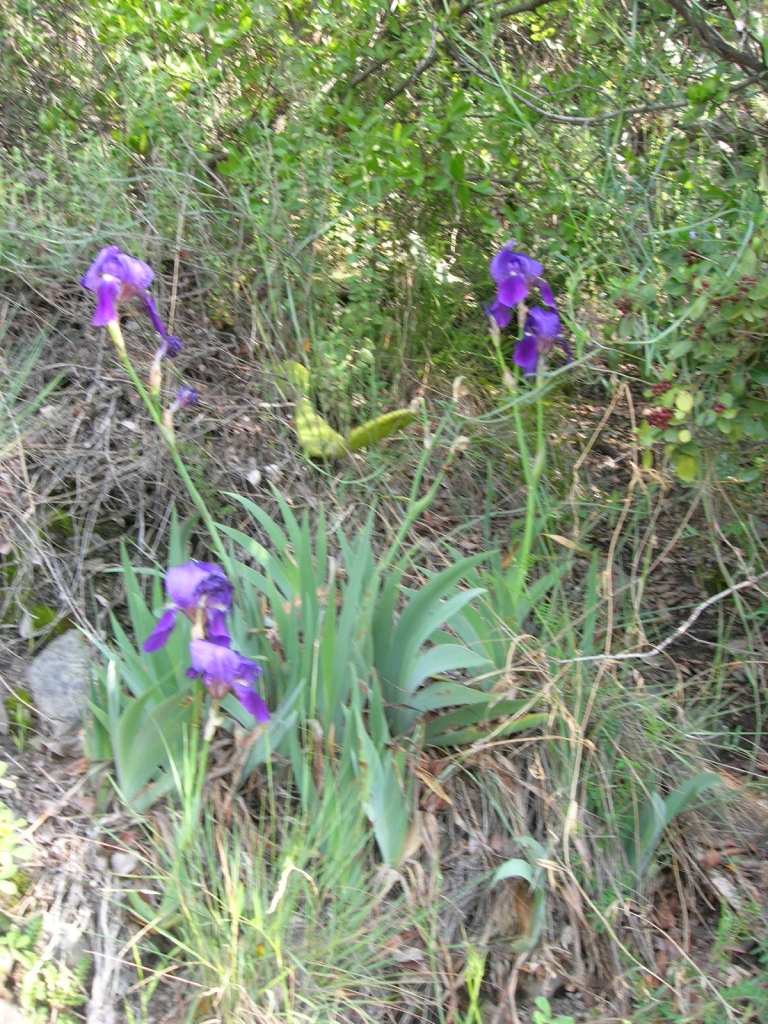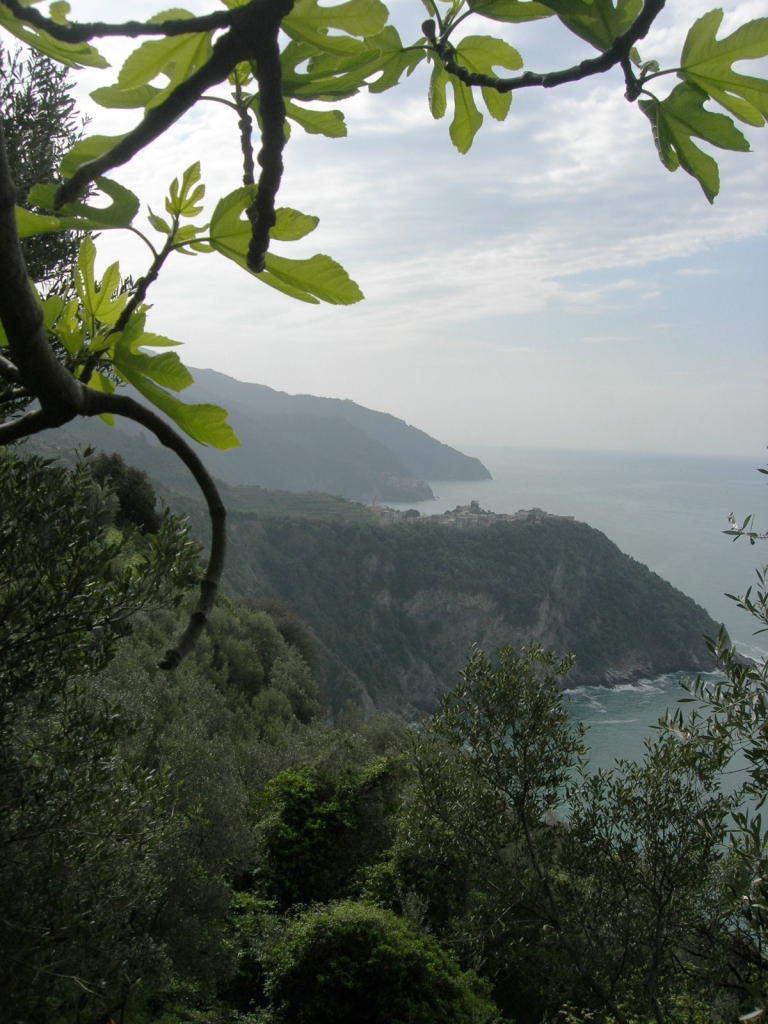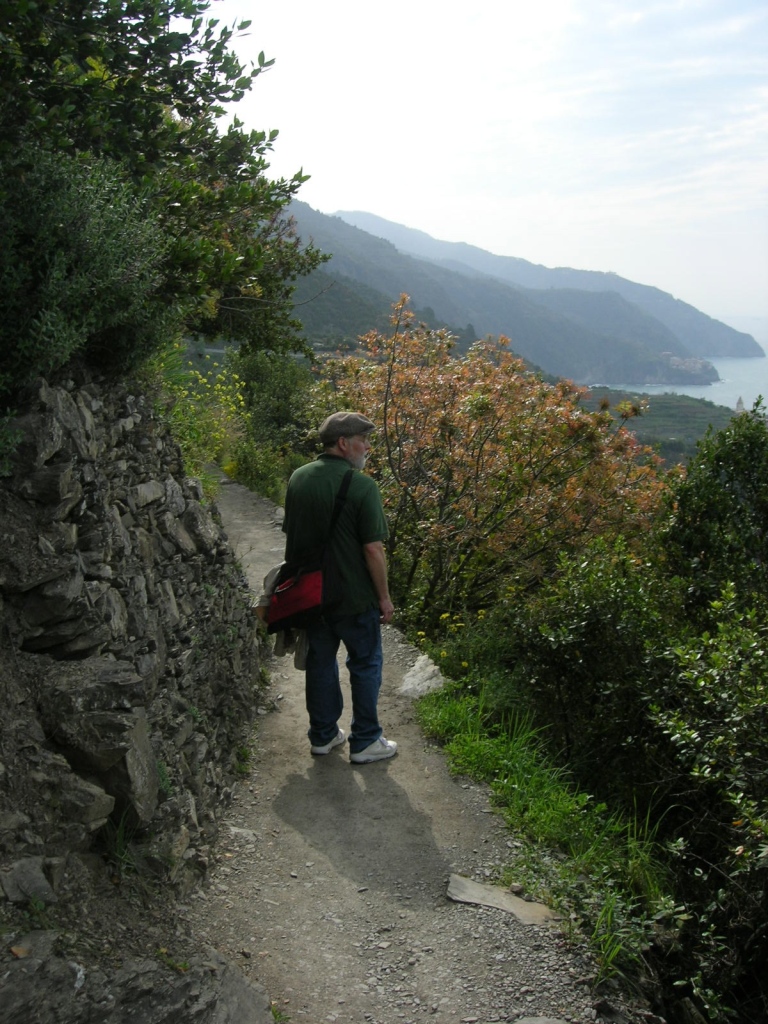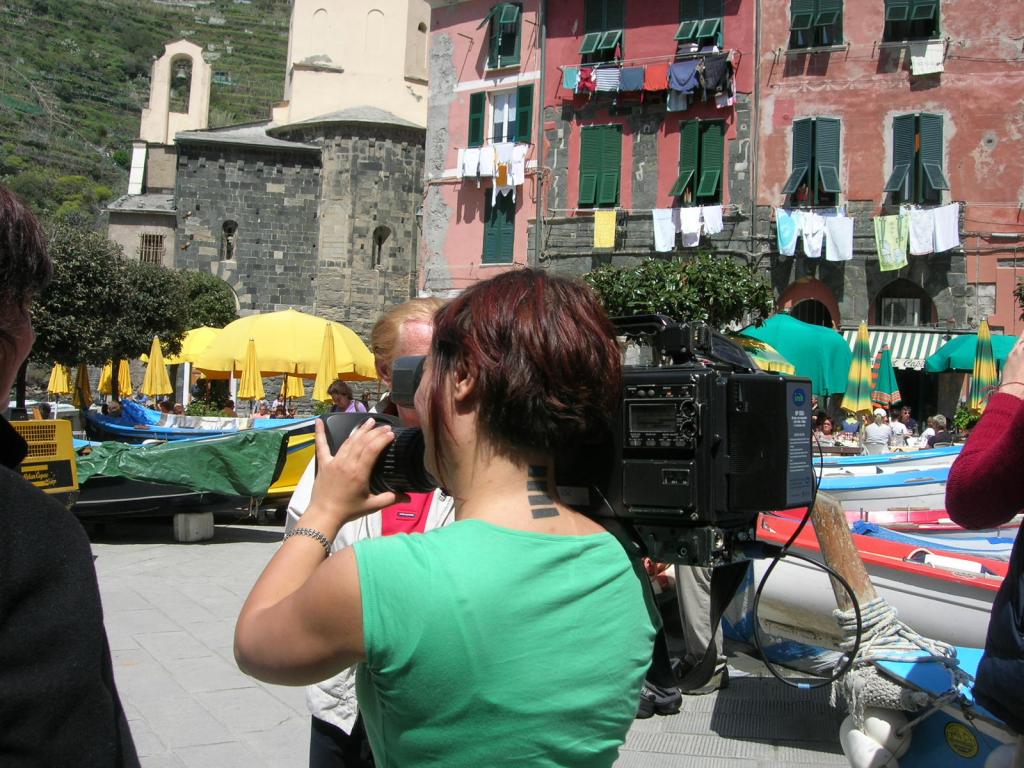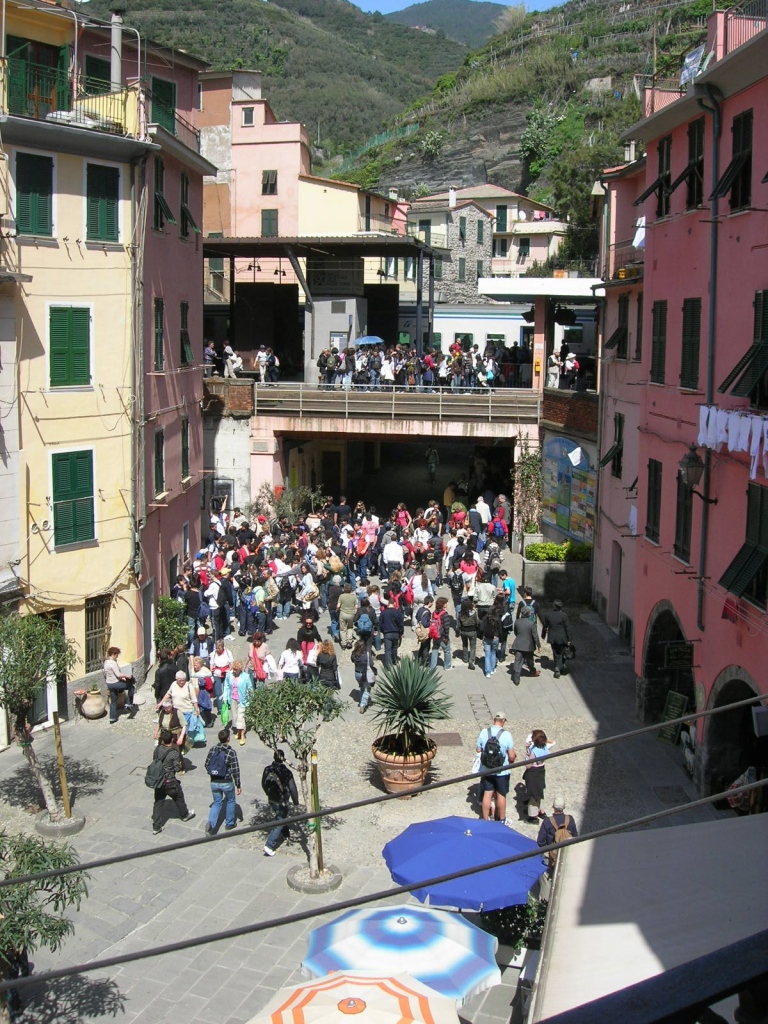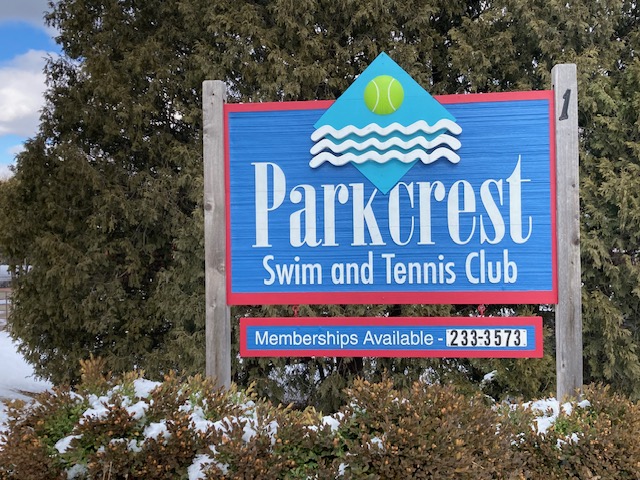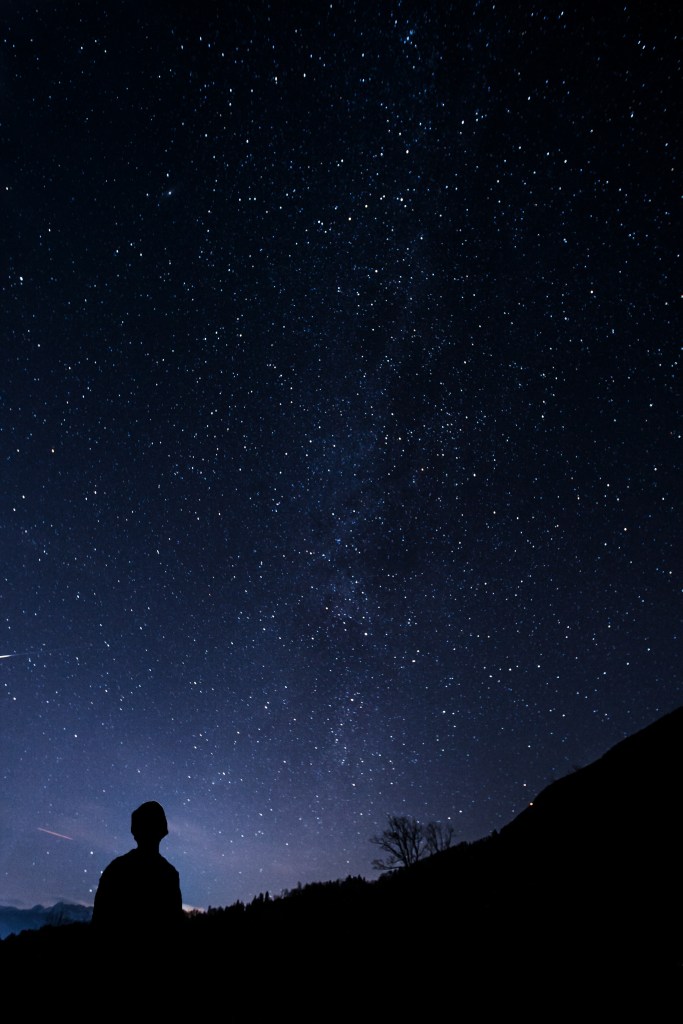
Over the next several months, I am serializing my six-chapter travel memoir about a trip to Italy’s Cinque Terre in 2008* here. In 2010, I self-published Write Your Travel Memoirs: 5 Steps to Transform Your Travel Experiences Into Compelling Essays. It included five how-to chapters and, to provide an example, this memoir. The book is available on Amazon.com.
Meanwhile, I welcome your submissions to True Stories Well Told during my “travel memoir takeover.” Let’s fill that queue for after the series ends. See submission guidelines here.
Chapter 5: The Days Blur, the Faces Don’t

“Sapete, dove ce un camera per questa weekend?” Do you know where I can find a room for this weekend? While I nap above Paulo’s store, Jim has been using his Conversational Italian to work the system, going from store to restaurant to shop asking about rooms. Let’s hope he won’t need his Dylan Dog Italian. If he’s unsuccessful we will soon be living a traveler’s incubo.
On this Friday afternoon of the Liberation Day holiday weekend, we are halfway through our vacation. Maybe we should have had more reservations about traveling without reservations.
There are few hotels in Cinque Terre. Rooms for tourists are offered through a network of locals. For every family living here, there are two or three apartments emptied by a grandparent who died, an uncle who moved to Genoa. This area was losing population fast until the 1970s. Then tourists began to find their way to Cinque Terre. By the mid-1990s it was well known to the backpacker/youth-hostel crowd. When Rick Steves filmed a show here in 2003, the deal was sealed: prosperity ahead for every family with the asset of a room to rent.
Each day locals gather around the station, approaching the suitcase bearers, just as Sergio had greeted us in Vernazza. If they strike you as cutthroat touts, ask at the train station or simply walk the street looking for affitta camere signs, rooms for rent.
Except on a super-huge holiday weekend? What were we thinking? Rick Steves’ book said, “Book ahead if you’ll be visiting in June, July, August, on a weekend, or around a holiday.” (Of Liberation Day he says, “Stay away from the Cinque Terre.”) Oh Rick, why didn’t we listen to you?
By the time Jim returns from his hunt, I have awakened and gone to the balcony with my Dylan Dog and dictionary. He fills me in; no specific news, but some prospects. He has also asked Paulo if there’s any possibility of extending our stay in this room, but no word on that.
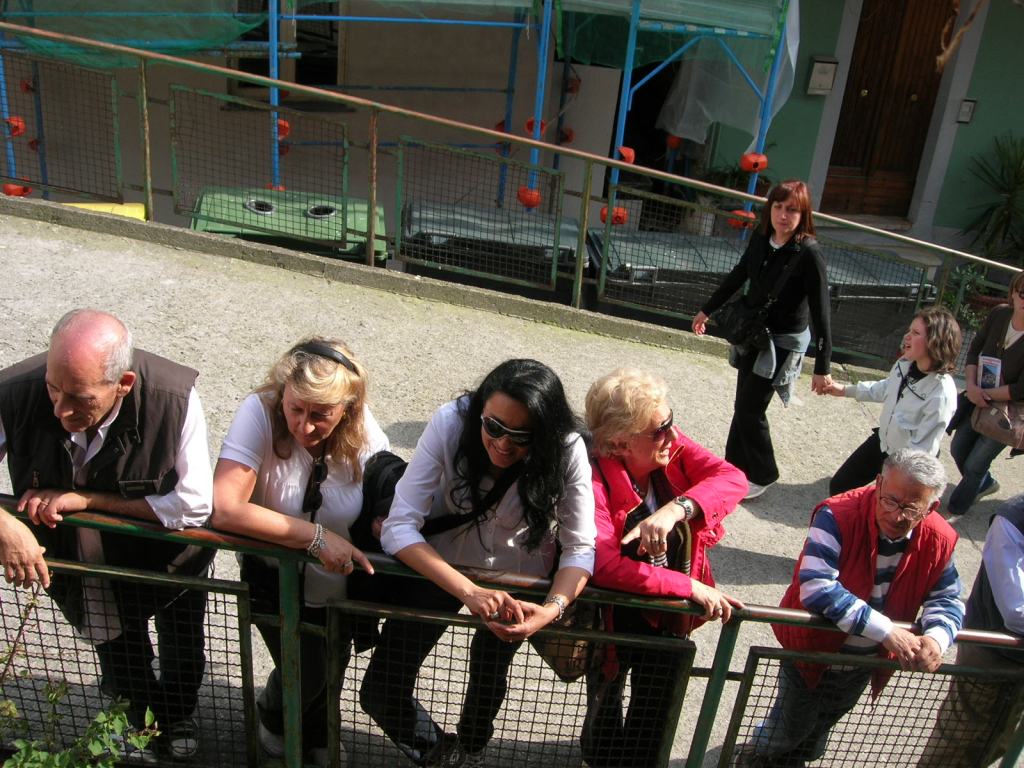

The stream of tourists rounding the corner by our balcony is slowing. People coming to Manarola are here by now, late afternoon sun warming them as they bask on rocks in the harbor, sit at the sidewalk cafes, or take to the trails. I find I prefer photographing them to decoding pages of Dylan Dog.
But who’s this coming through the gate to our balcony? An elderly woman with a mad cloud of silver hair, flowing embroidered denim skirt and blouse, ropes of silver jewelry around her neck, wrists, fingers. She must be one of the gypsies we’ve been warned about.
“Go away,” I say, alarmed, but my Italian comes out twisted; I say “I am leaving,” not “I demand you leave.” And in a moment I’m glad. She says she is Paulo’s mamma! She has come to tell us we have the room for the weekend! Jim makes up for my rudeness by offering conversation. After the introductions I tell her Jim is a pastry chef. She says she will bring us her specialty, a regional dessert called a bonêt.
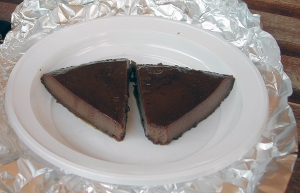
Later she appears with two slices of a sort of chocolate ricotta pie, round and dark like a little bonnet. “It’s not good,” she apologizes, “It requires a vanilla bean, and I didn’t have one.” Thank goodness for Jim’s cooking vocabulary, otherwise we would have missed this subtlety. Even though we are about to head out for dinner, we pause to eat the dessert— without refrigeration we don’t want to risk spoilage. It indeed lacks something… but we stop to compliment her anyway before we begin our climb to Da Billy’s, a restaurant where Paulo has made a reservation for us. This is the kind of place where, if you ask “how’s the fish?” Billy comes out with a tray of them staring up at you, appearing to follow along as he consults on their relative merits as dinner.
We enjoy an appetizer of salty sardines, share a platter of lasagna while avoiding making eye contact with the slightly unnerving prawns, tiny eye-stalks imploring, little claws folded in prayer. From Billy’s balcony the sun sets over the headland and the wrinkled alleys of Manarola below slide into shadow. On the slope facing us, something like Christmas lights are coming on: white twinkles that outline a stations-of-the-cross diorama, laid out among the terraces by a man grateful for a miracle.

We are grateful for the miracle of being here, now, in the glow of wine, seafood, purple sunset, and the knowledge that we still have our temporary home over Paulo’s store. Is that the sound of his trumpet drifting up here? Yes—Paulo’s practicing again, now it’s Joni Mitchell’s “Goodbye Porkpie Hat.”
Another day and another, we wake in our room over the ceramic store, set out for some small destination, continue to wrestle against the landscape and the day-trippers, arrive at day’s end contented with what we’ve seen, done, eaten.
The plan to alternate days of rest with days of hiking has fallen apart. Every time we leave our door, it’s strenuous walking. The push/pull is as delicious as flirtation; shall we go see what’s around the next corner? But it’s uphill, or coming back will be… is it worth the effort? It is! For the price of a few steps under Cinque Terre’s magnified gravity, such views… Every turn presents a new framing of sea and sky, or a hillside striated by stone walls, or a streetscape jumble of pastel stucco. And following each little exertion comes the reward, so many pleasant little cappuccinos and glasses of wine, so many breaks for cornetti or panini or pro secco or gelati, because we need to get off our tired feet.
© 2024 Sarah White

*I self-published Write Your Travel Memoirs mainly as an experiment to test the print-on-demand workflow before offering it to my clients. I had the content, from workshops I had taught for Story Circle Network’s online classes, and enjoyed adapting it to book form.

